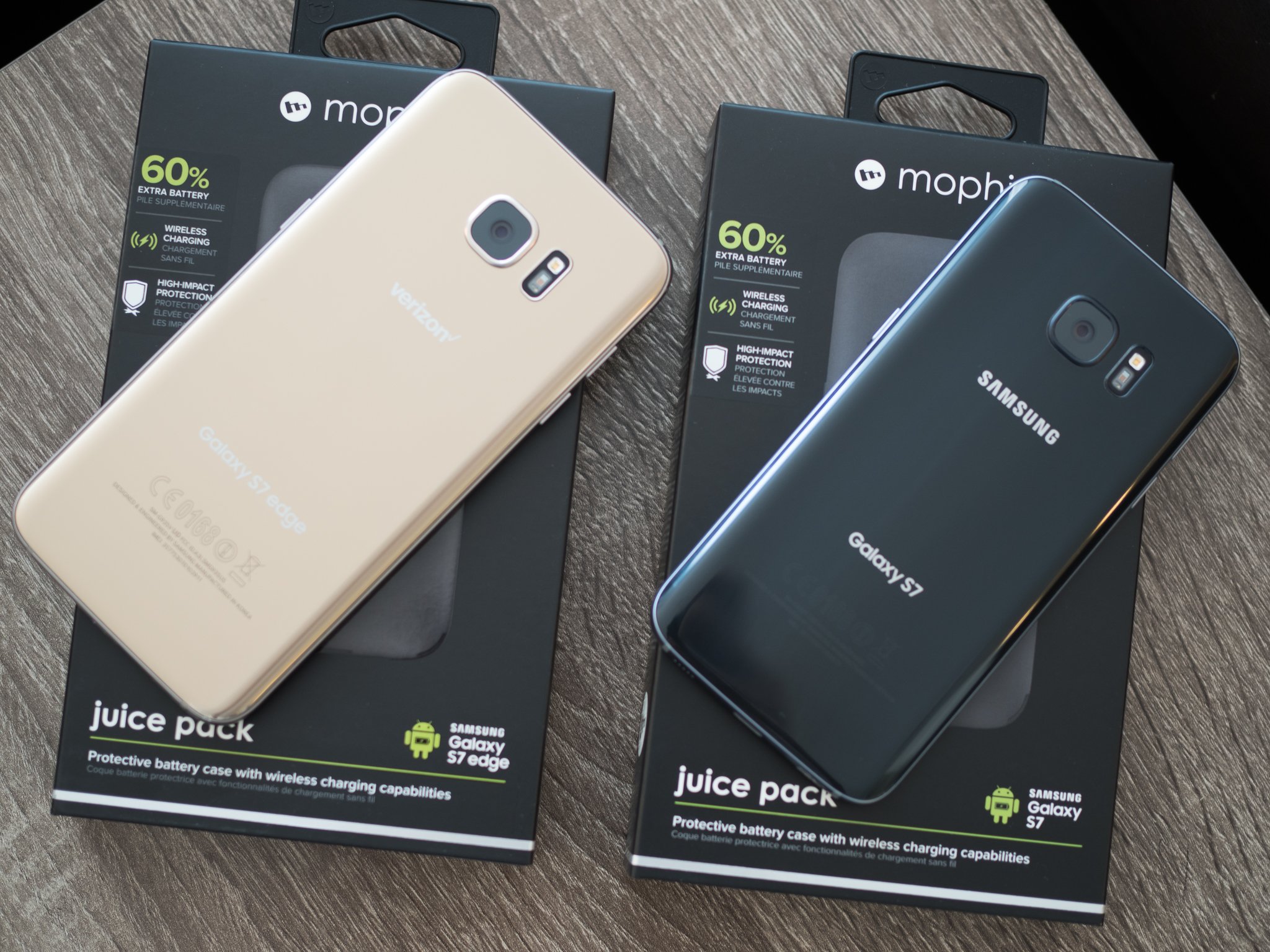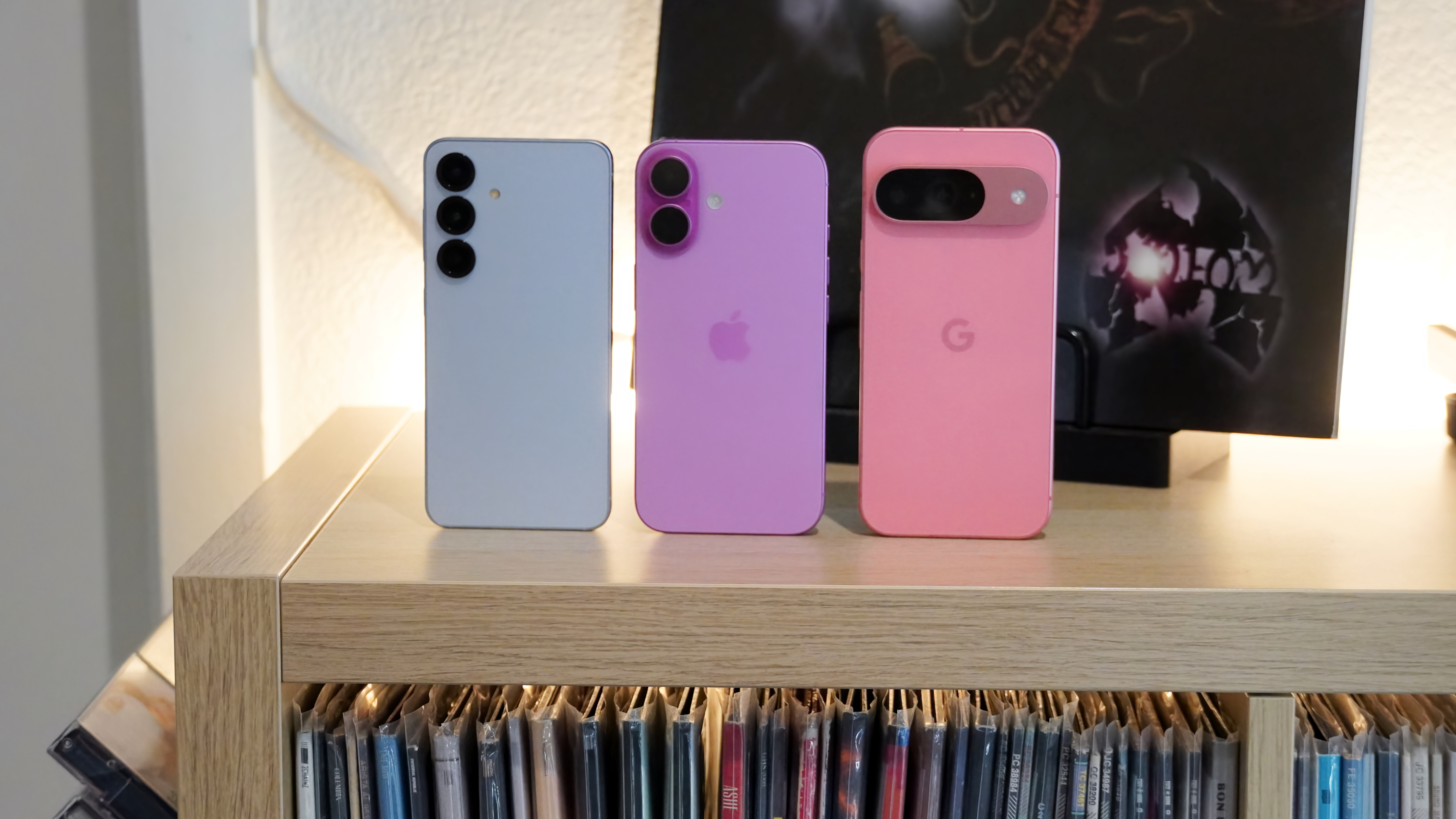Samsung unexpectedly impressed us with its own wireless charging-enabled battery case for the Galaxy S7, with a few clever design decisions that made it the only one to date we'd recommend. But when a company like Mophie that's known for its battery cases offers up its latest Juice Packs, we can't turn down an opportunity to try them out.
Mophie makes the new Juice Packs for both the Galaxy S7 and S7 edge, and at $99 charges more than Samsung does while offering a higher capacity and a different set of features (and trade-offs). Does it all add up to the best possible combination in a battery case for your Galaxy S7 or S7 edge? We're here to find out.
Design and materials
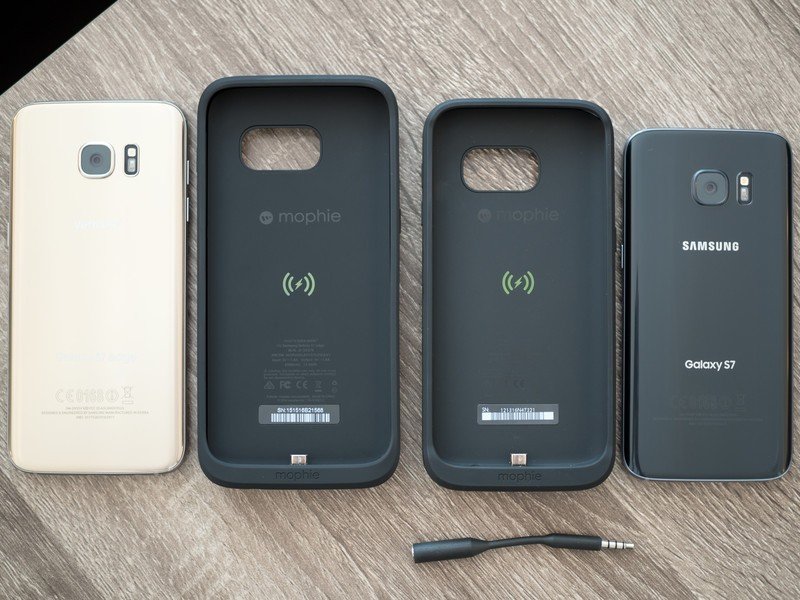
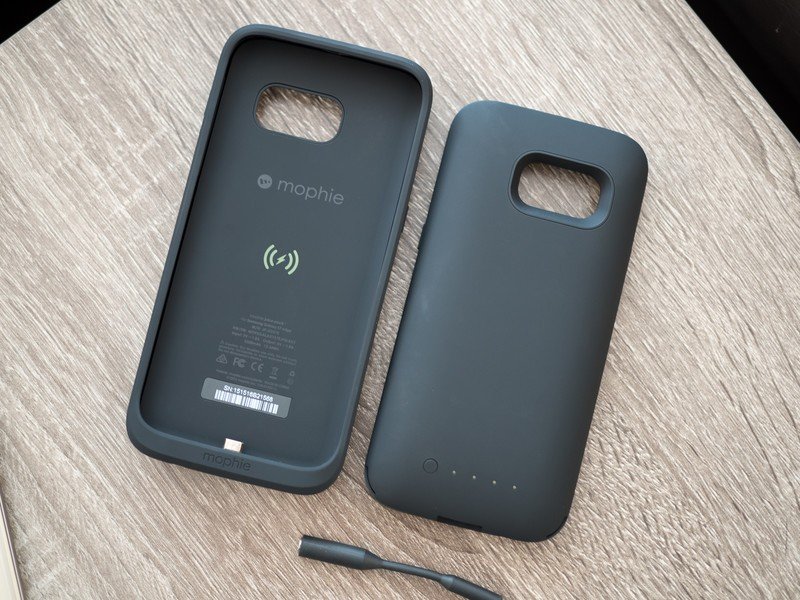
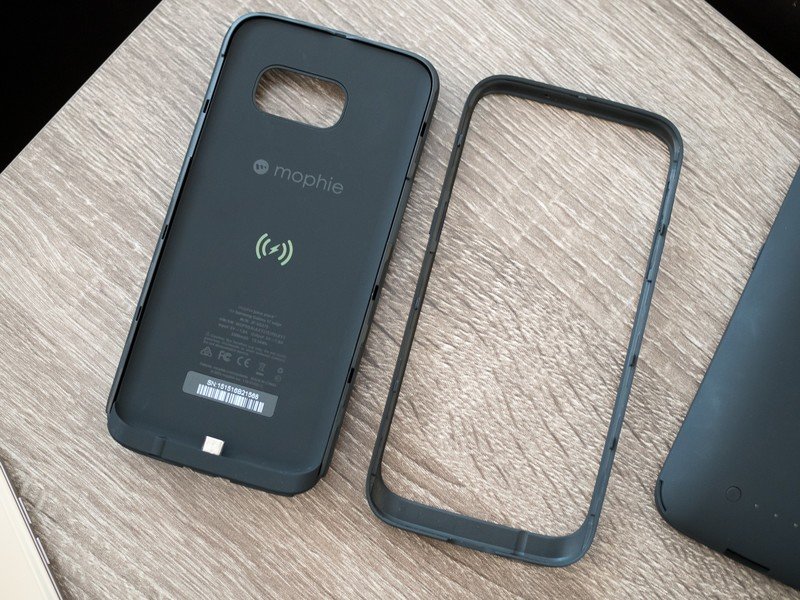
Whereas Samsung did something fresh with its battery case by charging the phone wirelessly to cut down on extra bulk, Mophie is taking its more traditional design by still charging the phone over its Micro-USB port. That means you're getting a full-coverage case that's going to add a considerable amount of bulk, and because of the Micro-USB plug you're going to have a nice little "chin" on the bottom of the phone to boot.
The Juice Pack is as compact as it can be, but that still means it makes your phone bulky and heavy.
That chin provides a Micro-USB port that lets you charge the case and pass data through to the phone, but also blocks the speaker and headphone port from being fully operational. The former isn't too big of a deal since there's a small passage for sound to escape, but the latter means you'll be limited in what kind of headphones or speakers you can plug into. Relatively small and straight headphone plugs will fit through the opening and into the phone, but anything with an L-shape connector or larger housing will require the included two-inch headphone extender — and let's be honest, that's just as absurd today as it was on the first ever battery cases years ago.
The entirety of the case is coated in a smooth and slightly soft rubber material, without any sharp angles, and has nicely clickable button coverings for your volume and power keys. To get the phone in it, you pry apart the top ring of the case from one of the bottom corners as it breaks away from the thick part of the case with a multitude of little clips. Once the the phone is slotted in and connected to the Micro-USB plug, you clip the front plate back on to hold everything together.
That top ring is surprisingly slim and while it sticks up above the face of the phone at the top and bottom, it nicely tapers down to be nearly flush with the screen on the sides, even on the curvy Galaxy S7 edge. It's slim enough that the case doesn't get in the way of performing swipe-in gestures from the edges of the screen on either phone, which is important, though the added bulk of the case overall may cause you problems. There's no way to get around the case being thick and heavy when it has a large battery inside of it, and Mophie's Juice Packs are considerably larger than Samsung's own battery case.
Using and charging
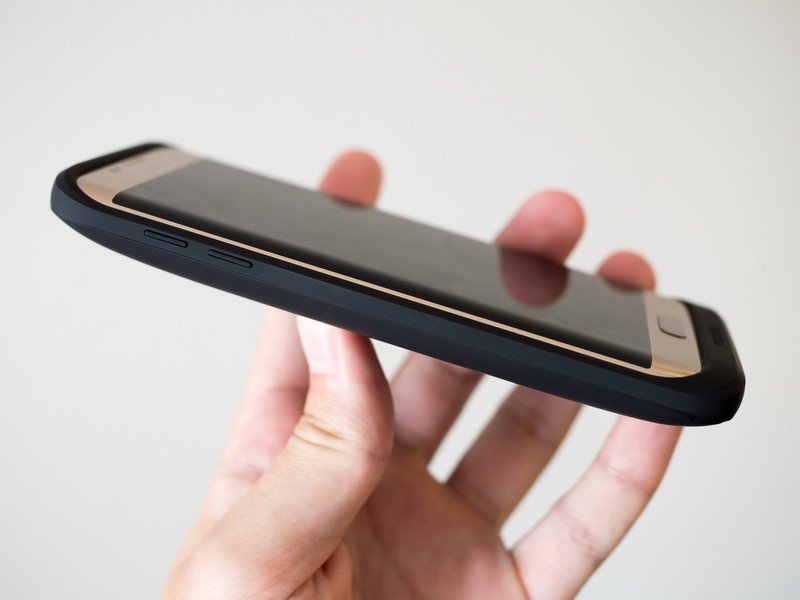
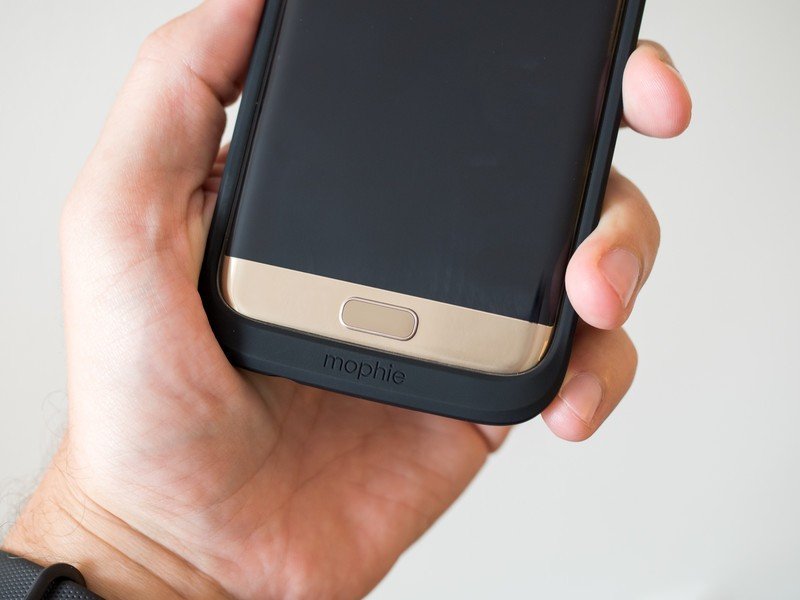
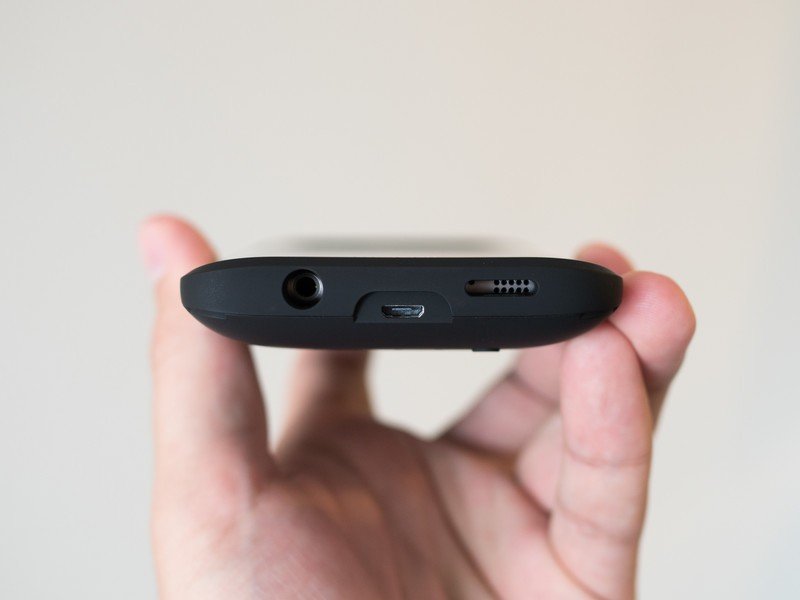
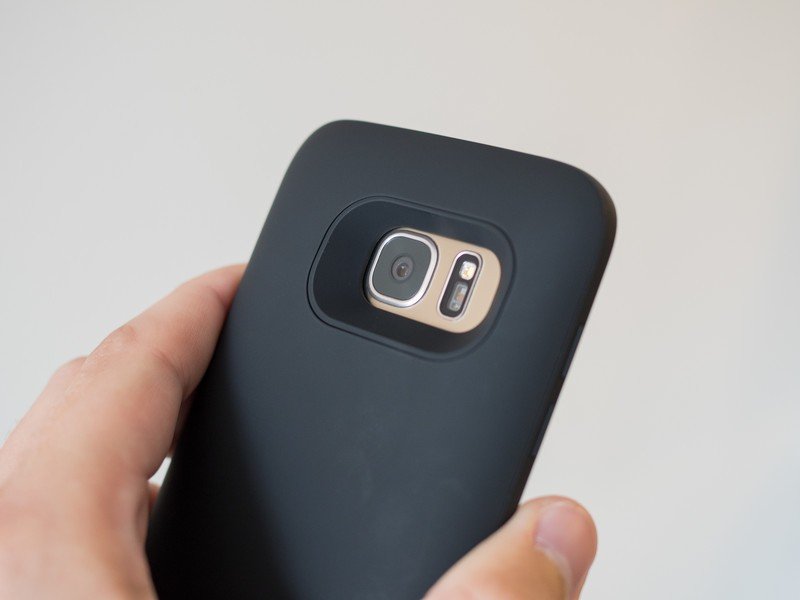
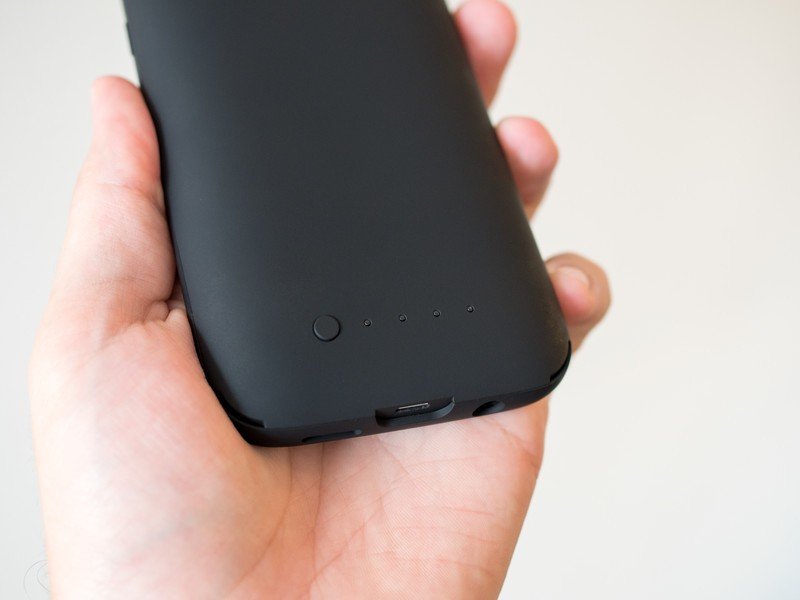
Mophie gives you 2950 mAh of capacity in the Juice Pack for the Galaxy S7, just shy of the 3000 mAh in the phone, and 3300 mAh in the Juice Pack for the GS7 edge, short of the 3600 mAh in that phone. In either case, Mophie purports a 60% boost in battery life, so long as you strategically use the power.
The only function on the case is a small button at the bottom of the back — a single press of the button illuminates up to four LEDs indicating the case's charge state (25% charge per light), while two seconds of holding the button turns the flow of power out of the case on or off.
The Micro-USB connection gives you a faster charge, and the case itself charges up wirelessly if you want.
Tossing the Juice Pack on my Galaxy S7 and continuing to use the phone as I normally would, it added 60% to the phone's battery in roughly one hour and 20 minutes. Not only is that 10% more overall capacity added than what Samsung's battery case could do, the Juice Pack did it in half the time. That's the power of having a hardwire connection right there.
Unlike Samsung's own battery case, the Juice Pack itself can be charged wirelessly (as well as wired), meaning if you're used to dropping your Galaxy S7 or S7 edge on a wireless charger to top it up, you can keep that muscle memory in tact when it has the case on it. If you choose to use it this way the case will pass the charge through to the phone first before topping up the case's battery, as you'd expect.
The bottom line
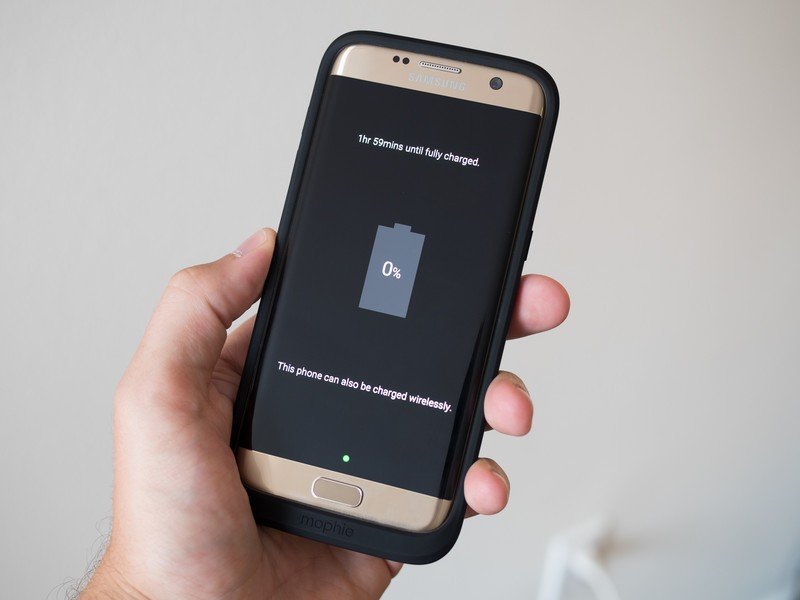
With its latest Juice Pack battery cases for the Galaxy S7 and S7 edge, Mophie lives up to its reputation of making solid accessories that do exactly what they claim. The Juice Pack will add a solid 60% battery to either phone, and do it much faster than Samsung's own battery case will. And if you're someone who has invested in wireless chargers at home and work, you can still use the case with them.
Unfortunately, that bump in capacity, faster charging and sturdier design have the disadvantage of adding considerable bulk to your phone — even compared to Samsung's battery case. These Juice Packs aren't in any way as simple to pop on and off like Samsung's case, and they cause problems in terms of making the phones extra thick and tall. They also block the use of many types of wired headphones and speakers you're likely to plug into your phone throughout the day.
If you've chosen to get a battery case, you have to think long and hard about what's most important for you in terms of features. Do you need extra protection, capacity and faster charging speeds, at the expense of making your phone extra large and awkward? Or would you prefer the simplicity of wireless charging and minimal bulk, understanding that your phone won't charge as quickly or as much?
There are your two options — Mophie's Juice Pack, or Samsung's Wireless Charging Battery Pack.
Andrew was an Executive Editor, U.S. at Android Central between 2012 and 2020.
